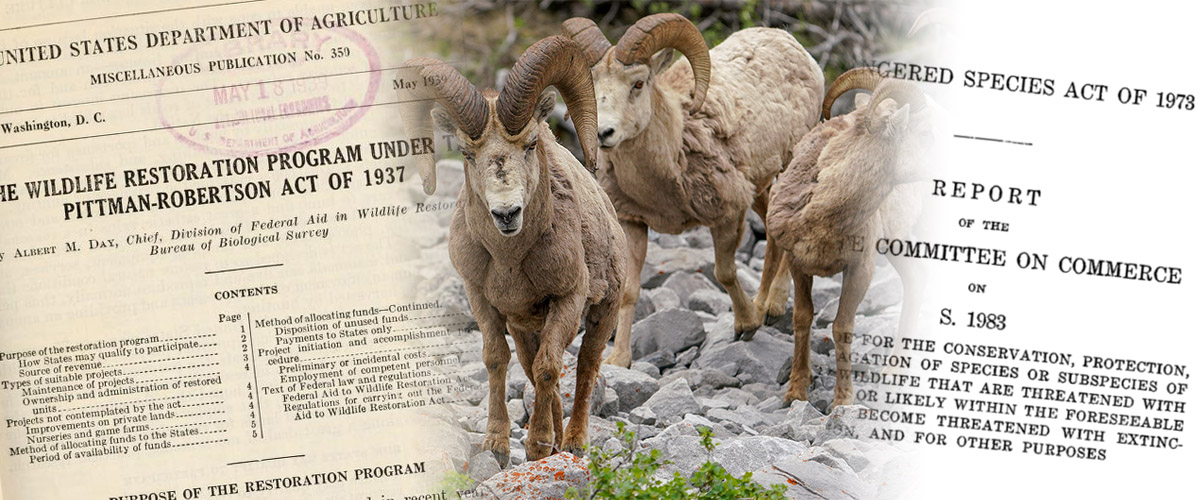
The Endangered Species Act (ESA) turned 50 years old last year. The celebrations and condemnations mainly repeated the ESA chatter of the last 25 years: it’s great, it’s terrible, it works, it doesn’t. The more interesting thing is how ESA became part of the conversation about the Pittman-Robertson Act. The Pittman-Robertson Act (PR) turned 86 as ESA turned 50 and is a far bigger part of the Wild Sheep mission. PR is arguably the most powerful wildlife restoration program in the U.S. and an example of how ESA might improve.
If there were an Endangered Species Foundation that raised as much money for ESA projects as WSF raises for PR projects, the ESA Recovery Challenge Grant program would double. This is essentially what WSF funds do for the PR program.
If the ESA program had base funding – as PR does – from the people most interested in its success, the ESA program would recover more species, as PR has. PR runs on an excise tax on sporting arms and ammunition because hunters committed this to the first species recovery strategy in the U.S.
In the first 10 years of PR, from 1938 to 1948, state wildlife agencies began conserving habitat and translocating 15 species to expand populations. These early projects faced the same challenges that ESA faces, such as figuring out how to capture and move wildlife safely. Early attempts to capture wild sheep, for example, were shockingly primitive, dangerous, and unsuccessful.
The 1987 report on the first 50 years of PR reported progress on about 20 species benefited directly – unknown additional species benefited indirectly from the habitat improvements. The number is important because ESA has about 1,700 species listed as threatened or endangered.
Unlike PR, ESA was not designed to restore species. Recovery is the goal, but the strategy is to protect all listed species from threats and recover some species opportunistically. Most of this work is paperwork; much less is field work. The US Fish and Wildlife Service provides few reliable numbers on what it accomplishes: it has lists of species, it does not have useful data on how much money is spent on them, projects attempted, or results. The PR program runs on annual lists of projects.
The current idea for putting the mojo of PR behind the ESA program is to expand the PR program to benefit more than game wildlife. This is the goal of the proposed Recovering America’s Wildlife Act. “RAWA” intends to prevent the need to add more species to the ESA lists by helping them now.
Last year was the seventh year of RAWA debate in the Congress. The bill is hung up on the main question of where the money would come from. Questions remain on the other important points of how an expanded program will learn and execute, and how many species it can benefit.
The original idea for funding RAWA resembled the PR excise tax idea. It was to direct fees and royalties on developing public oil and gas reserves. These are known revenues, but not from the people most directly interested in wildlife; still, there was logic to using value from under the ground to create value on the ground.
RAWA now proposes to direct $1.3 billion of general federal spending into the PR account for distribution to state and tribal wildlife agencies. The agencies are to use the money for species declared to have the “greatest conservation need.” There are 12,000 of these species: seven times more than ESA species and hundreds of times more than PR species.
Committing the money would create the possibility of figuring out what and how much work to do, and the way hunters commit money is a model. When taxpayers were unsure if wildlife conservation was a priority for their taxes, hunters were, and made themselves into a tax base. As our agency partners showed skill and commitment to field work, hunters raised additional funds in support.
Fifty years of law, policy, and practice under ESA will be hard to change, but nearly 90 years of PR success should be an incentive.
Tags: